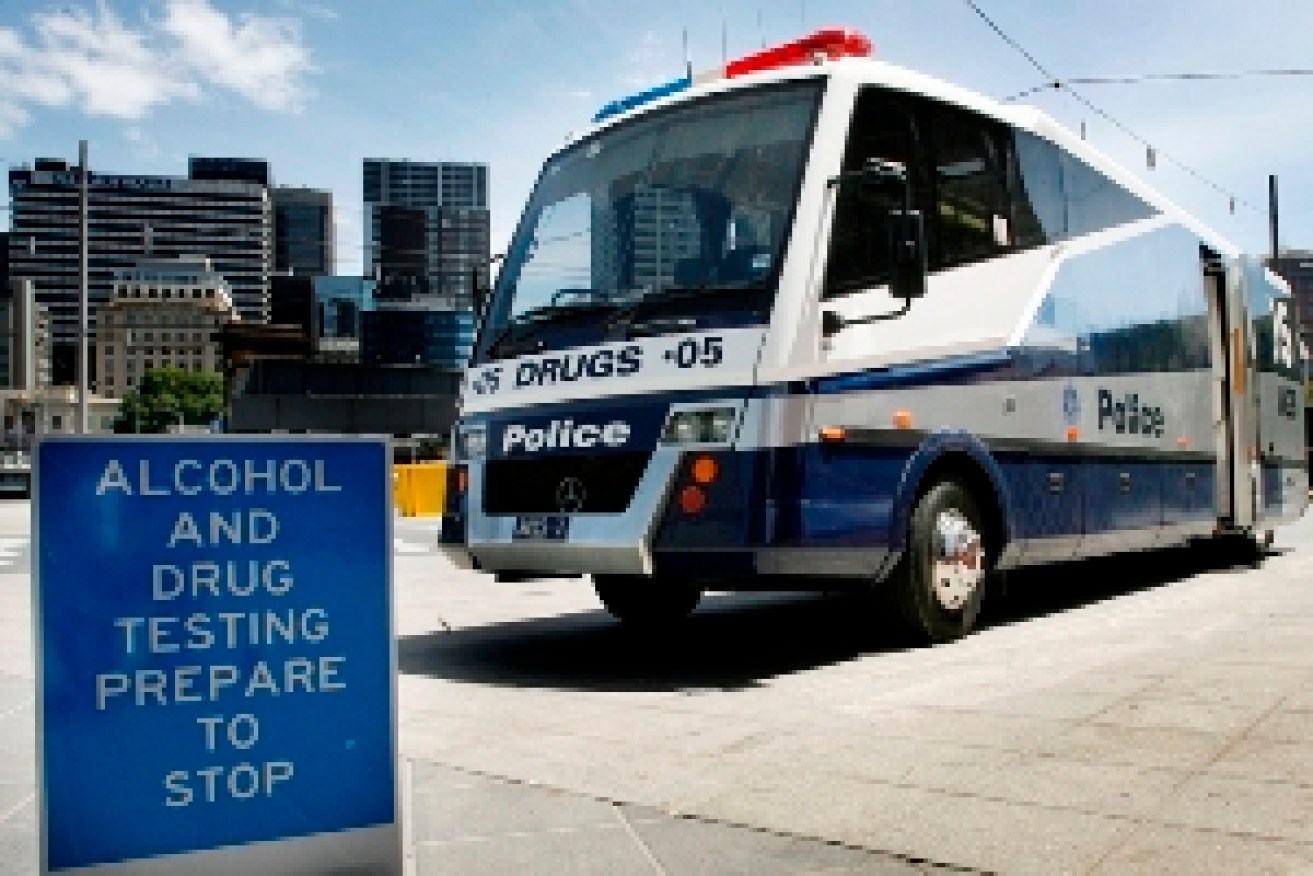Rate of drug-drivers now exceeds drink-drivers

Victoria Police
The rate of drivers picked up for drug-driving now exceeds the rate of drink-drivers, and up to 30 per cent of fatal road accidents are caused by drivers using illicit substances, according to research.
Margaret Prendergast from the Centre for Road Safety in NSW says in 2013, 16 per cent of road fatalities “involved a driver or a rider with illicit drugs”.
Last year in Victoria, 56,000 drivers were drug tested and one in 16 returned a positive result, compared with one in 267 drivers testing positive for alcohol.
• Stefanivoc’s marijuana puff praise
• Missing hiker may have ‘stumbled onto drug crop’
• Bernard Tomic ‘bragged about cocaine’
“Road safety authorities in every state are really worried about drug-driving,” Ms Prendergast told the ABC’s 7.30 program.
“With cannabis you are about 1.3 times more likely to experience a crash.
“With amphetamines it’s six times. With ecstasy it’s about 1.6 times.”
Sue Parson’s 45-year-old husband was one of three people killed by a drug-driver in Victoria.
“He (the driver) was an ice addict, he hadn’t slept for three days before the accident,” she recalled.
The driver hit Tony Parsons, who was crossing a busy intersection in suburban Melbourne, then smashed into a car.
“We found his body lying on the road, I kept shaking him, ‘Honey, talk to me, talk to me’.
“He was already dead. Since I lost Tony, nearly every second accident you hear they’re on ice.”
Police step up random drug-testing
Police across Australia are stepping up random drug-testing in a bid to curb the growing number of crashes.
Victoria was the first jurisdiction in the world to introduce random drug-testing in 2004.

Victoria was the first jurisdiction in the world to introduce random drug-testing in 2004. Photo: Victoria Police
Inspector Martin Boorman of Victoria Police, who was involved in development of the state’s program, said the presence of illicit drugs in road trauma was a “significant issue”.
“It’s growing, and we need to, as a community, understand that and put in the effort to change that just in the same way as we did with drinking and driving,” he said.
Professor Jeremy Davey, at the Centre for Accident Research and Road Safety at QUT, said driving was one of the most high-risk activities you could do on drugs.
“Driving is actually quite complex, you have to make lots of decisions, split-second decisions, all the time,” he said.
“You have to have eye hand coordination, you have to think ahead – driving a motor vehicle is perhaps one of the most high-risk activities you can do on any psycho-active substance.”
Professor Davey added that drugs destroy a wide range of skills required for safe driving.
“Meth and amphetamine are stimulants, what they tend to do is speed up the body, speed up the actions of the brain, how people think, but often people’s brains get scrambled and the messages get scrambled.
“Then you have substances like cannabis, where it tends to slow peoples’ reaction times down, it slows their judgment down.”
– ABC








